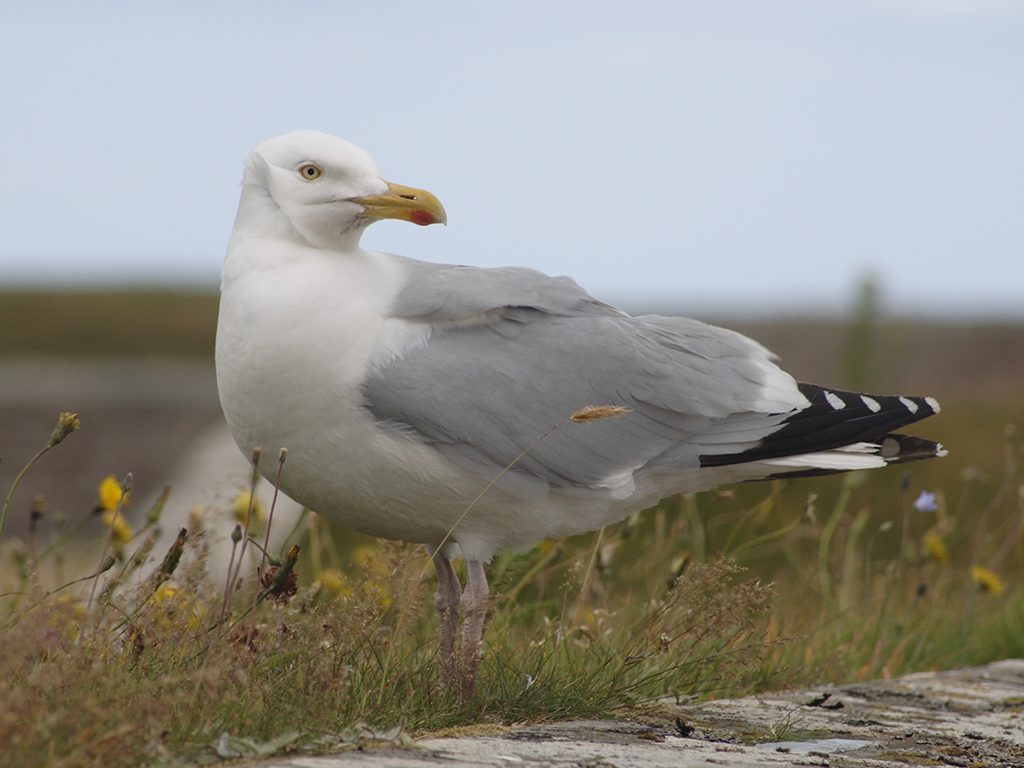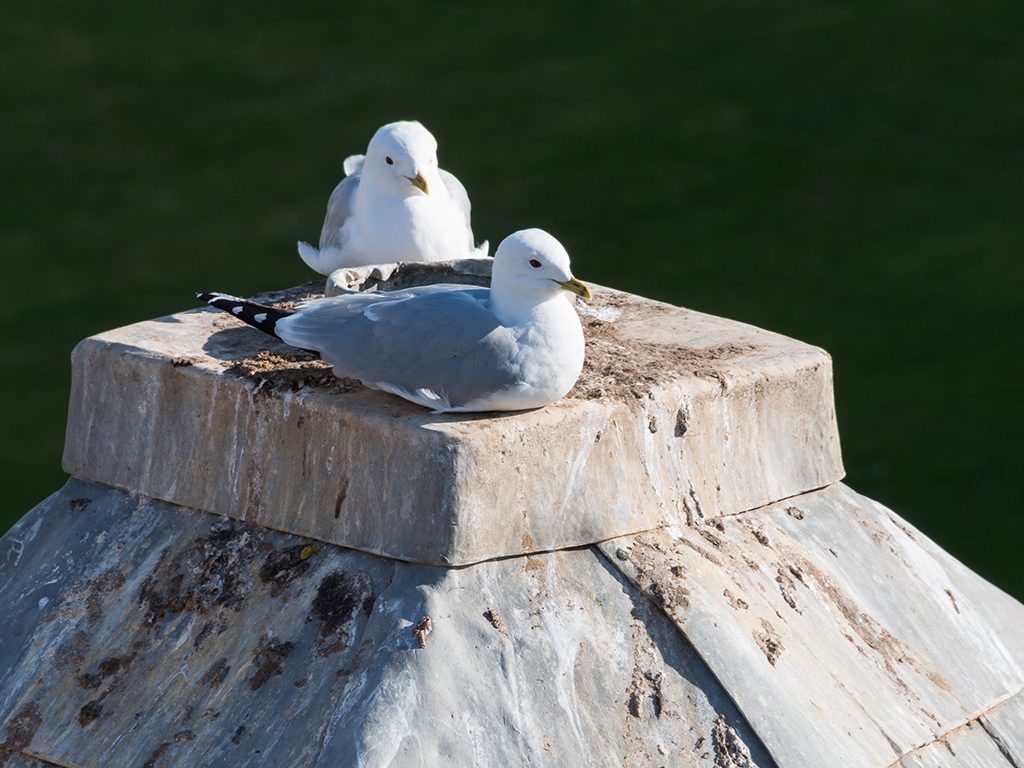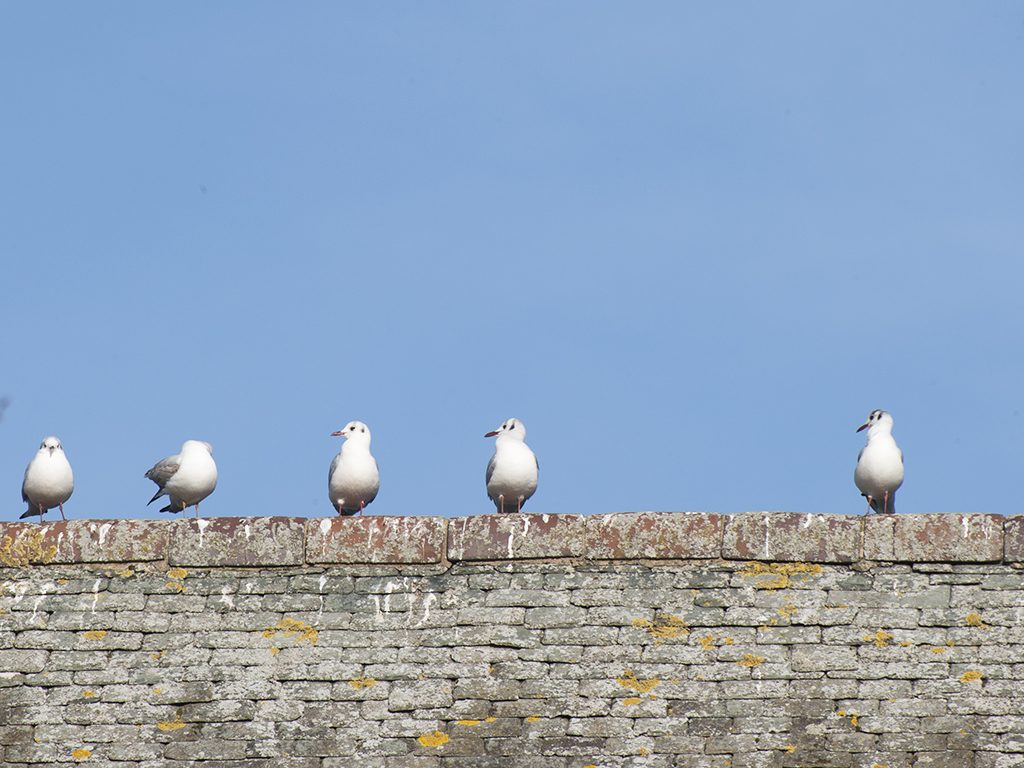Bird Control in Scotland’s Older Buildings
Conservation, Maintenance | Written by: Sophie McDonald | Thursday 27 April 2017
As Scotland’s towns and cities continue to expand, wild birds are often forced out of their natural habitats and into urban environments. This means that bird control can become an issue in older and traditional buildings.
In saying that, in Scotland’s traditional buildings, sarking (boarding between the roof coverings and the rafters) in roofs means there isn’t as much space for birds to squeeze in.
But if you do have problems with birds in your traditional building or older home, our advice can help you learn how to prevent birds nesting in your roof.

A seagull standing on a wall in a rural setting
While seeing birds near where you live can be a wonderful chance to observe the natural world, birds can cause serious damage to traditional buildings.
These include:
- acidic bird droppings corroding metal fixtures, as well as damaging and staining masonry
- feathers, droppings and even dead birds blocking rainwater drainage systems
- droppings making pavements and other areas slippery, a potential risk for injury

Seagulls sitting on a building’s roof
The best bird control methods
While all bird species have the potential to cause these, and other problems, the most likely species to do this in the UK are pigeons, house sparrows, seagulls and starlings. Like all nesting birds, they’re protected by the 1981 Wildlife and Countryside Act. This makes it illegal to tamper with or prevent them accessing their nesting sites, and to take or destroy their eggs.
The RSBP recommend allowing birds to nest wherever there is no conflict. Where roofs need to be sealed off, they recommend placing nest boxes under the eaves for starlings, sparrows, swifts and house martins.
Non-destructive bird control methods
If nesting birds are causing damage to your property or home there are other non-destructive bird control methods. Carry out any work to deny access in the winter months when birds aren’t nesting. You can use:
- decoys: putting out models of birds of prey can scare pests away and stop them from roosting. You’ll need to keep moving your decoy for it to remain effective
- sounds: sonic devices giving off high pitched noises can act as a bird deterrent. They’re more effective for some species than others, so get advice on which system would be best for the type of bird you want to tackle
- nets: you can physically prevent birds from roosting by stringing netting over openings and possible roosting sites. Different sizes of mesh are available, so think about the size of the birds causing you problems before buying netting for this purpose. You should also be careful not to damage the building when putting up netting
- spikes: probably the most common system for deterring birds, you’ll probably have seen rows of pins attached to strips on ledges and other surfaces. This stops birds from landing, and although it can look strange is effective, long-lived, and should be completely reversible
- spring wire: this acts in a similar way to the spikes and netting, physically preventing birds from perching. It’s easier on the eye, but is more invasive to the building – the wire have to be strung from posts, which are attached with glue, or cemented into drilled holes
- chimney pot guards: if you aren’t using your chimney on a regular basis, it’s advisable to fit a chimney pot guard to prevent birds from using it as a nest site. They’re cheap and easy to install, as long as the chimney is accessible

Seagulls sat on top of a wall
Bird prevention
It’s also possible to deter birds through introducing birds of prey into their habitat, or removing any potential sources of food. Make sure bins are covered and the area around them is kept clear and discourage people from feeding them.
We don’t recommend shooting or poisoning problem birds. As well as the potential legal issues we’ve outlined above, these methods have the potential to cause harm to people and birds.
For more information, check out our Inform Guide on Bird Control.
About the author:
Sophie McDonald
Sophie worked as a Digital Content Officer with Historic Environment Scotland until 2017, spending her time looking after the Engine Shed's blog posts and social media channels.
View all posts by Sophie McDonald



